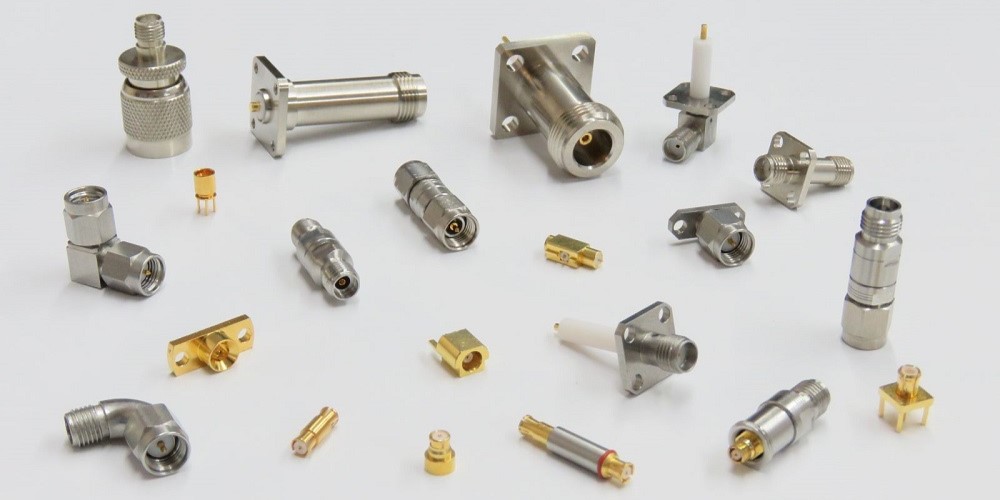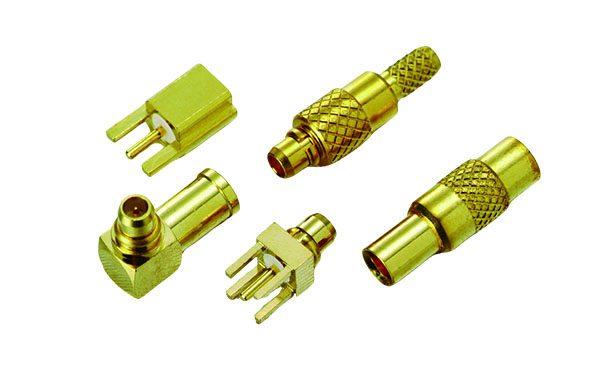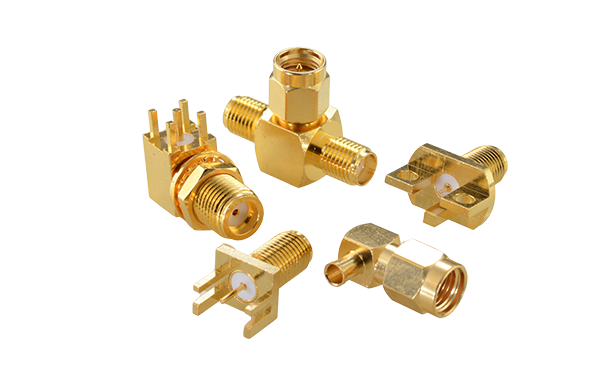- HOME
- Applications
- Blog
- How to Choose the Right RF Adapter? Specifications, Applications, and Selection Guide
How to Choose the Right RF Adapter? Specifications, Applications, and Selection Guide
25-03-17
RF adapters play a key role in communication technology, affecting signal quality, system flexibility, device compatibility, and even affecting the performance and efficiency of the overall communication network. RF adapters not only affect the quality of the signal and transmission efficiency, but also determine the compatibility and flexibility of the device. With the development of 5G, satellite communications, Internet of Things (IoT) and other technologies, high frequency, low-loss RF adapters will become more and more important. To further promote the progress of wireless communications technology.
What are RF Adapters?
Among coaxial connectors, RF Adapters are devices designed to connect different types of RF connectors or different specifications of RF interfaces. Their main function is to provide mechanical and electrical compatibility to ensure that signals are transmitted smoothly without excessive loss or distortion.
〈Extended Reading: What are RF Connectors?〉
Common Types of RF Adapters
RF adapters play a key role in wireless communication, test equipment, antenna connection, etc. RF adapters are mainly used for connecting different types of RF connectors, matching impedance, improving signal quality, and ensuring stable transmission of wireless signals. The following are some common types of RF Adapters.
In-Series Adapters
- Connect the same type of RF Adapters, e.g. SMA female to SMA female or N male to N female.
- Use to extend cables, change gender (male/female), or change connector orientation.
〈Extended Reading: 5 Minute Guide to Understanding the Uses and Applications of SMA Adapters〉
Between-Series Adapters
- Connect different types of RF Adapters, such as SMA to BNC or TNC to N type.
- Allows connection between different systems for easy integration of different RF devices.
Impedance Matching Adapters
- Used to match between 50 ohm and 75 ohm systems to minimize signal reflection and power loss.
- For example, 50Ω BNC to 75Ω BNC.
Special Purpose Adapters
DC Block Adapters: Block the passage of DC signals and allow RF signals to pass.
Attenuator Adapters
Reduce the signal strength while adapting to protect the receiving equipment.
Main Functions and Applications of RF Adapters
Key Features of RF Adapters
Connect Different RF Adapters to Ensure Device Compatibility.
Allows connection of different types of RF adapters (e.g. SMA to BNC, N to TNC) to ensure compatibility between devices. Reduces the need for equipment replacement and increases system flexibility.
Impedance Matching to Improve Signal Quality
Common RF systems use 50Ω (wireless) or 75Ω (TV, CATV), and mismatched impedances can cause signal reflections and losses. RF Adapters can be used to convert between 50Ω to 75Ω, reducing VSWR and improving signal stability.
Reduces Insertion Loss and Ensures Complete Transmission of High Frequency Signal
High quality RF adapters are designed to minimize Insertion Loss and enhance high frequency signal integrity, especially for high-frequency applications such as 5G, millimeter wave, and satellite communications.
〈Extended Reading: What is high frequency? High Frequency Features and Applications!〉
Testing and Maintenance
RF adapters are used to connect different test instruments in laboratory tests, network analyzers, spectrum analyzers and other equipment. Helps engineers to quickly replace different types of connectors and increase test flexibility.
Signal Adjustment and Control
- Attenuator Adapter: Reduces RF power and prevents equipment damage due to overpowering signals.
- DC Block Adapter: Block the direct current and only allow RF signal to pass through to protect the sensitive equipment.
- Right Angle Adapter: Used in small spaces to minimize bending loss of antennas or cables.
Applications of RF Adapters
Wireless Communication (Wi-Fi, 5G, LTE, IoT)
RF adapters connect different wireless communication devices, such as 5G antennas, Wi-Fi routers, LTE modules, and so on. In millimeter wave band applications (e.g. 24GHz, 28GHz, 39GHz), low-loss RF adapters ensure efficient transmission.
Test Equipment and Laboratory Applications
RF adapters are used to match different connectors in test instruments such as spectrum analyzers, network analyzers, and signal generators. Help R&D engineers test the performance of RF components such as filters, amplifiers, and antennas.
Satellite Communication and Aerospace Applications
High frequency systems such as satellite ground stations, GPS devices, and satellite antennas require low-loss RF Adapters to ensure stable signal transmission. Some special RF adapters can be used in space environment and military applications, which have the characteristics of anti-vibration, high temperature and radiation resistance.
Broadcasting and Cable TV (CATV / Broadcast)
75Ω RF adapters (e.g. F Type, BNC) commonly used in cable TV, satellite receivers, broadcasting systems, etc.. Ensure stable signal transmission and avoid image and sound distortion
〈Extended Reading: RF Cables Major Characteristics, Applications and Key Points for Selection〉
Ham Radio
UHF, PL-259, SO-239 RF adapters are used for connecting radio antennas, transceivers, amplifiers and other equipment. Help amateur radio enthusiasts to build wireless communication system flexibly.
Specification for Selecting RF Adapters
According to your specific application requirements for selecting RF adapters, the following factors can help you choose the most suitable product. Below are some of the key selection points:
〈Related Product: RF Adapters〉
Frequency Range
RF adapters must be able to support the frequency range required by your application. Different RF adapters will have different frequency performance, which will affect the quality of signal transmission. When selecting the product, you need to make sure that it can withstand the operating frequency of your system.
Gender: Male or Female
There are different types of RF adapters, such as BNC, SMA, TNC, N Type, and so on. When choosing RF adapters, make sure that the male or female connector types on both ends match to avoid incompatibility.
Impedance Matching (50Ω / 75Ω)
Make sure the impedance of the RF adapters matches your system to avoid signal loss or distortion.
Attenuation and Reflection Loss
RF signals attenuate as they are transmitted, so it is important to select RF adapters with low attenuation and low reflection loss to ensure signal quality and stability.
Material and Durability
The material of RF adapters affects their durability, especially in high frequency or high power applications. Typically RF adapters made of stainless steel, copper, aluminum, gold plated contacts, etc. will have better performance and durability.
Plug and Unplug Times
If RF adapters need to be plugged and unplugged frequently, choose a product with high plugging and unplugging durability to avoid premature damage.
Electrical Performance
RF adapters need to choose the right electrical performance for their needs, such as whether they support high power transmission or require low insertion losses.
Size and Configuration
The size and shape of RF adapters are also important, especially when space is limited. Choosing the right size RF adapters will ensure a stable and interference free connection.
Environmental Adaptability
If RF adapters will be used in special environments (e.g., high temperature, humidity, vibration, etc.), their ability to withstand environmental impacts, such as waterproof, dustproof, and other characteristics, need to be considered.
Conclusion
RF adapters are a widely used in communication and wireless technology and provide flexible connections for different types of devices, making it easier and more convenient to connect devices or objects to be tested. They play an important role in a variety of applications in different fields and provide users with more flexible options. As a professional manufacturer of RF adapters, Huang Liang Technologies offers a wide range of RF adapters. We can provide our customers with a full range of one-stop services, including initial design, product simulation, assembly and electrical analysis, to give you with the best solution. If you would like to learn more about our products, please contact us.




